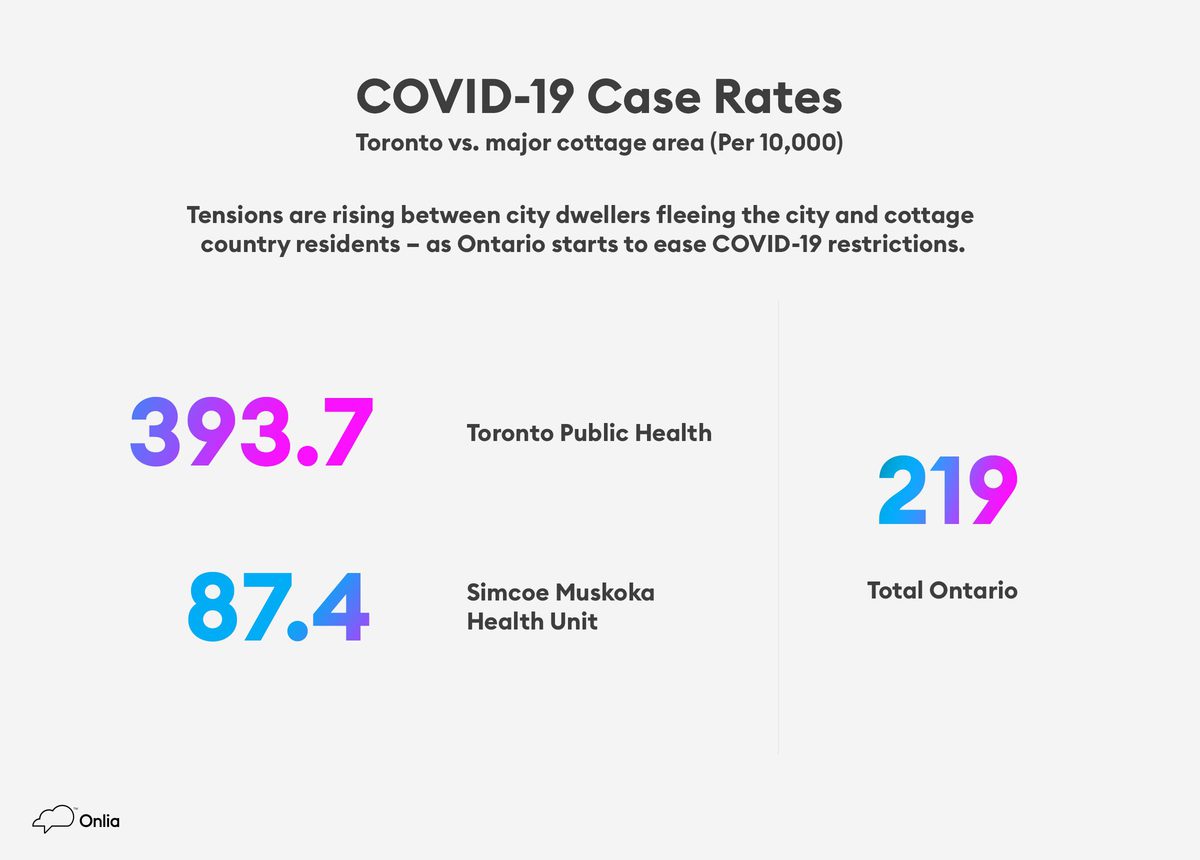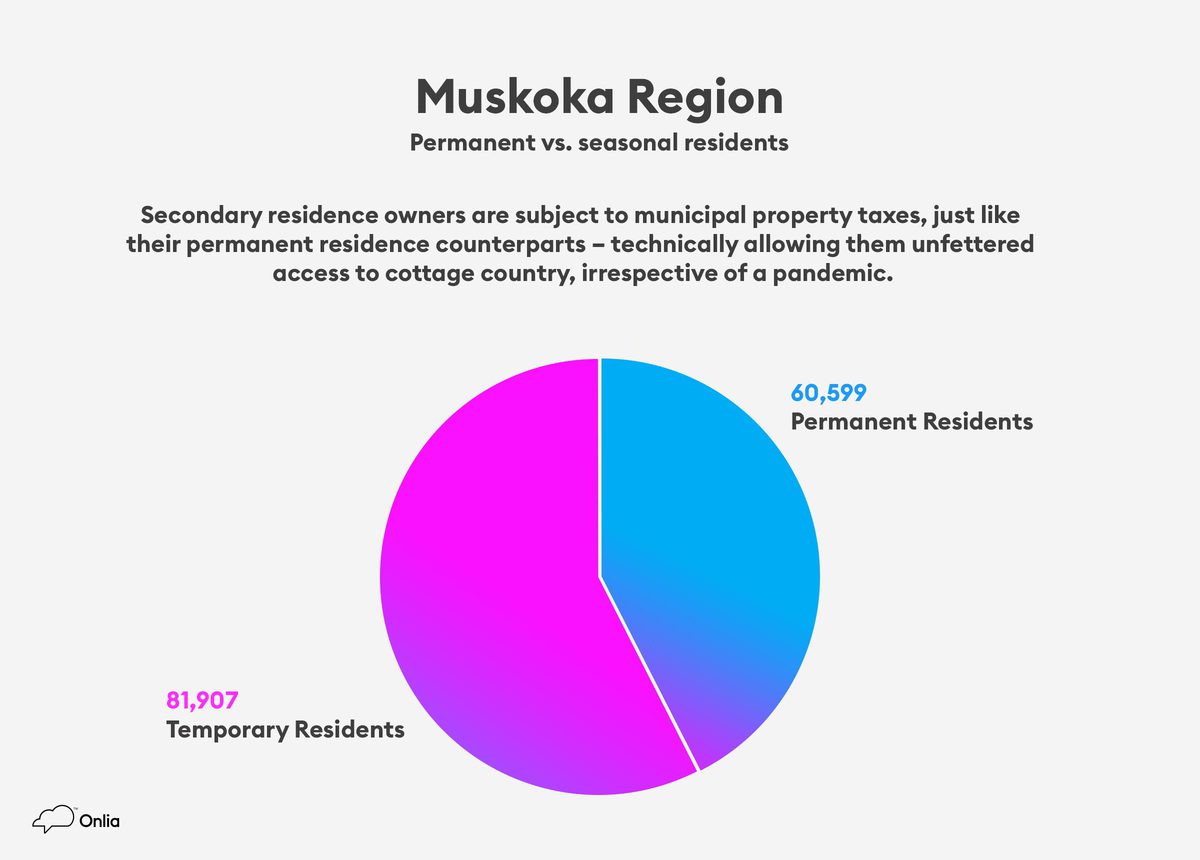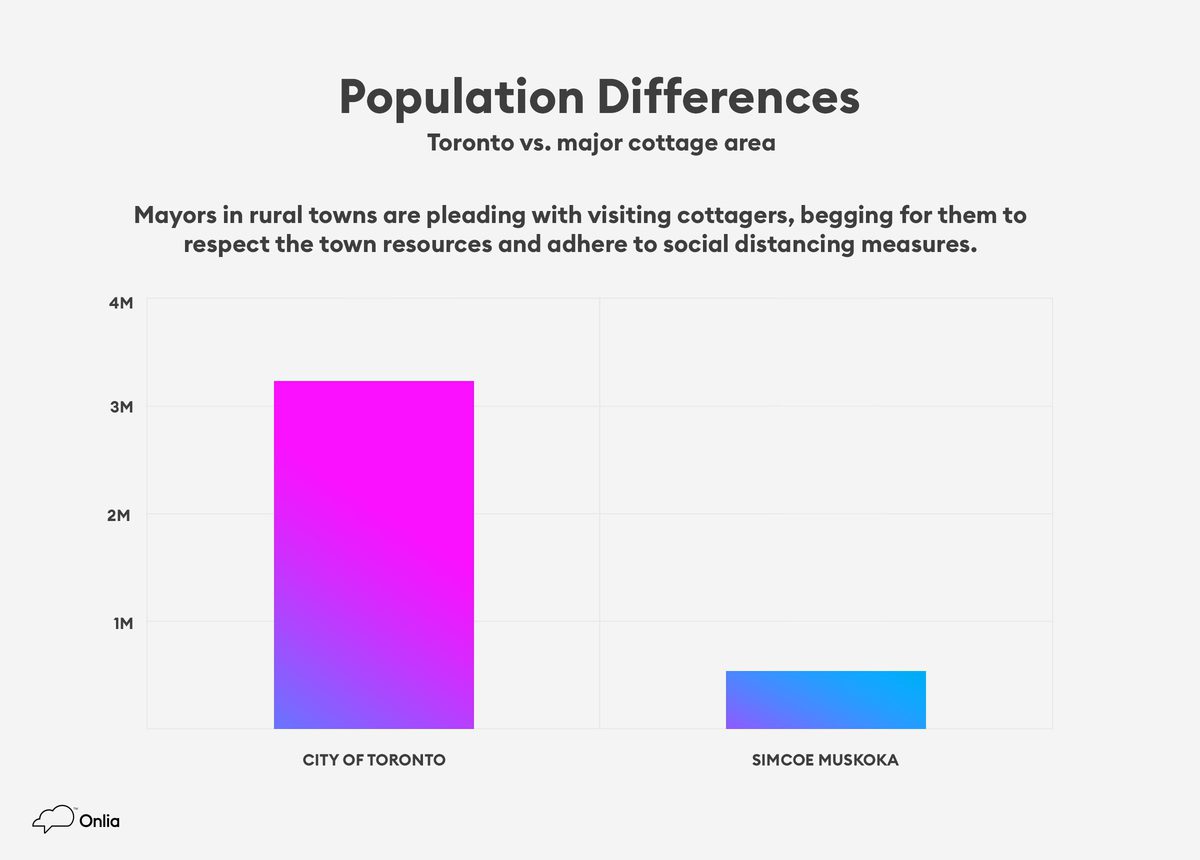Tensions are rising between city dwellers fleeing the city and cottage country residents — as Ontario starts to ease COVID-19 restrictions, permanent residents are concerned about the potential impacts on their small communities. In all of this, who should stay and who should go?
Fleeing the pandemic: Trading city for the country
Four months into Canada’s pandemic response, small communities are frustrated by the ripple effects of this decision, fearful that the influx of people will tax limited resources or walk-back efforts to #FlattenTheCurve. Municipal leaders are trying to cool a brewing divide between year-round residents and temporary cottagers, with an eye to the possible reality of a second COVID-19 wave this fall.

Source: Public Health Ontario, data pulled June 16, 2020
While the summer is now in full swing, residents of small towns have been expressing their dissent throughout the pandemic. Reports of refusals to turn on water for cottages or shutting down boat ramps have been visible protests to cottager relocations. Full-time residents have been concerned over the unseasonal population increase and the impact it has on resources, accessibility, and virus mitigation strategies. These aren’t isolated incidents either; Alberta and British Columbia have seen their own clashes between residents and visitors, resulting in smashed car windows, slashed tires, and vehicle-long key scratches.
Lack of rules create confusion
Throughout the entirety of COVID-19, it has been clear there is no playbook for a pandemic like this. The Township of Muskoka Lakes mayor admits that, unless the government closes highways, there are no regulatory levers to prevent city-based cottagers from visiting their residences.
Secondary residence owners are subject to municipal property taxes, just like their permanent residence counterparts — technically allowing them unfettered access to cottage country, irrespective of a pandemic. Some advocates have even pointed out that the Canadian Charter of Rights and Freedoms supports mobility rights, using the Charter to justify prolonged cottage stays. It is clear that the lack of guidance is leading to confusion and stress, as all residents try to coexist.

Source: The District Municipality of Muskoka
The reality of the situation is complex
While the rules may be grey, the reality is playing out in technicolour. Mayors in rural towns are pleading with visiting cottagers, begging for them to respect the town resources and adhere to social distancing measures. However, given recent concerns about quarantine fatigue, a relaxed adherence to social distancing and personal hygiene, this may all be falling on deaf ears, especially as summer approaches.

Source: Public Health Ontario, data pulled June 16, 2020
